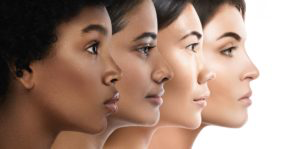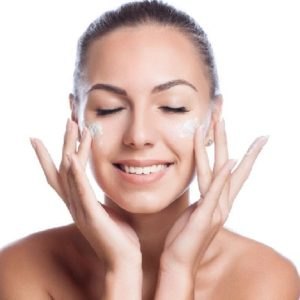How to pick the right Skincare routine for you?
‘One size does not fit all’
Your skin is very individual and it is always important to identify your specific skin type and any major concerns you may want to address first, before building up a skincare routine.
Clever advertising and promotions from well known brands, celebrities and influencers will always entice you to purchase their products, but what works for them may not necessarily be suitable for your skin type. In fact, using the wrong products can often cause more harm than good and hence it is vital to start in the correct manner.
Before embarking on a skincare routine, ask yourself -
‘How does your skin act and feel without any products or make up in the middle of your day?’
You may never have taken the time to really assess your skin in this way. There can be a considerable amount of confusing and conflicting information available on social media and on the internet, but this easy guide will highlight the signs and symptoms of each skin type allowing you to recognise yours and in turn be able to choose the correct products for your skincare routine.
Oily Skin
This is a result of overactive sebaceous (oil) glands. This can be due to your genes, or often as a result of using incorrect products for your skin type. If too much moisture is ‘stripped away’ from your skin, more oil is produced to compensate for this. Those with oily skin will experience an increased shine, blackheads and enlarged pores that will often lead to acne breakouts.
Dry Skin
This is characterised by the skin feeling tight, looking dull, lacking elasticity, feeling rough and itchy with patches of flakiness. These symptoms can be triggered when there is damage to the skin’s surface and moisture is able to escape, often allowing irritants in.
Combination Skin
This is the term used when the skin is both oily and dry at the same time, making a specific diagnosis confusing. The T-zone will usually highlight the oily skin; the excess oil, shine and clogged pores and dry patches (with redness and flakiness) can often be visible on the cheeks, jaw or hairline.

Acne-Prone Skin
Genetics, diet, hormones and P.acne bacteria can all play a role in causing Acne which presents as oily skin, whiteheads, blackheads and swollen red blemishes and pustules that take a while to heal but can often pop up again in the same areas.
Acne-Scarred Skin
Once blemishes disappear, you are often left with PIH (post inflammatory hyperpigmentation), which present as scars, red or brown marks on the skin. This pigmentation is due to the inflammatory response (from the breakout) damaging the collagen in the skin.
Sensitive Skin
This is not necessarily a ‘skin type’ as everyone can experience a level of sensitivity at some stage. Those with skin conditions including eczema, psoriasis and rosacea are often more susceptible to sensitive skin and extra care must be taken to avoid any products or treatments exacerbating these conditions. Extra attention must also be paid to your skincare routine if you feel your skin is specifically reactive, becomes irritated easily due to certain products or results in an allergic reaction.

Mature Skin
Our bodies produce less collagen and elastin (the proteins that keep the skin plump and firm) from our early to mid-twenties and hence our skin starts the ageing process. The skin will start to lose laxity and tone and the formation of fine lines and wrinkles will begin. The skin will also become drier over time due to the moisture levels being affected.
Identifying your own skin type will guide you towards suitable skincare products or treatments for your own needs. If you wish to address a specific skincare concern or condition such as melasma, hyperpigmentation, acne or anti-ageing, it is highly recommended that you consult a Skincare Practitioner who will be able to tailor a skincare routine or bespoke treatment plan for you, as well as offer you the guidance and support through your skincare journey.
Contact Avenir Clinics
07769324114
or Book your FREE Consultation today Book nowRickmansworth
Hertfordshire
WD3 1AR